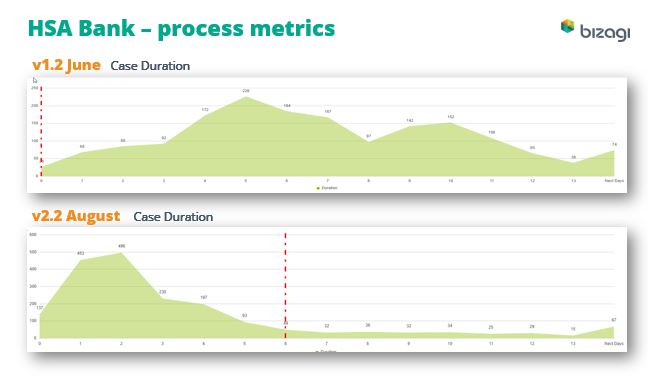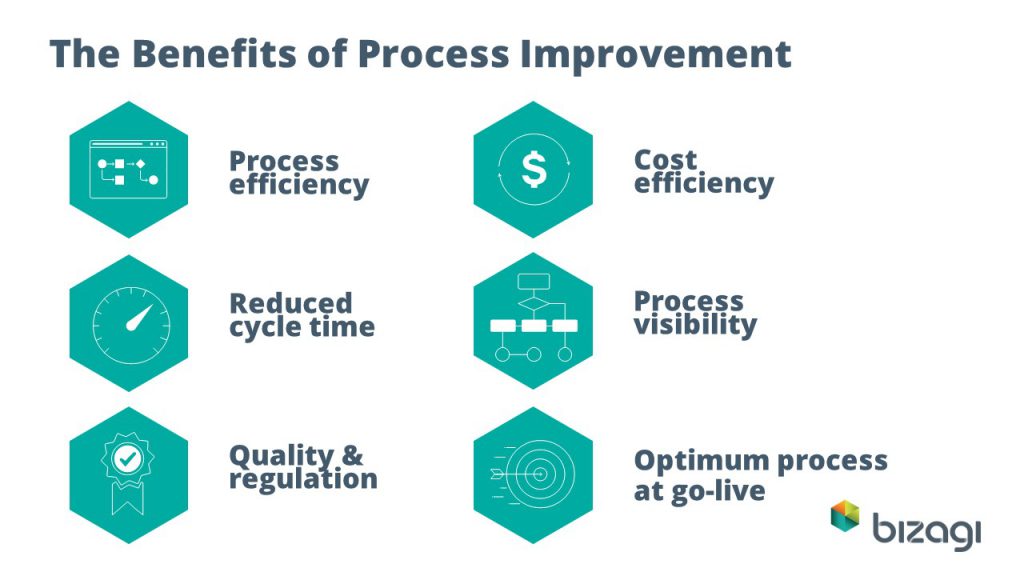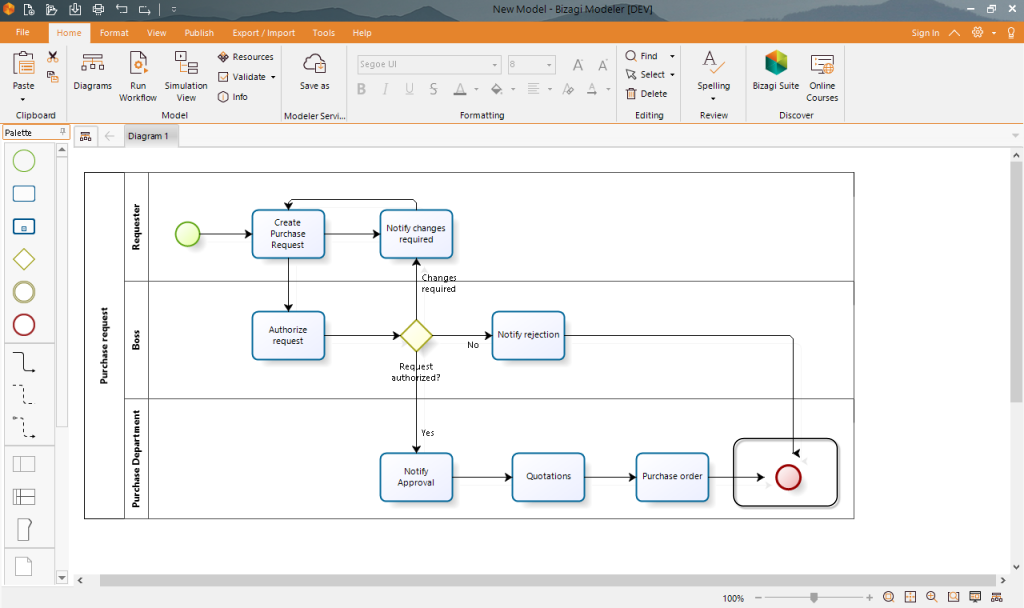Process Improvement: How to Optimize Process Performance
Blog: Bizagi Blog
What is process improvement?
Process improvement is a strategic approach to optimizing business processes. This practice includes identifying, analyzing, and refining existing processes to ultimately improve them. That improvement may mean increased efficiency, improved end-user experience, cost reduction, or stronger adherence to best practices and regulations.
Continuous process improvement is an important exercise for
any organization as the business evolves. Process improvement may be required
due to changes in business data or rules, updates to regulations and
compliance, or efforts to make the business more efficient and improve ROI.
There is no one way to go about process improvement. In fact, there are many different methodologies, including lean practices such as Six Sigma and Kaizen. These methods detailed below can all be used as part of process improvement projects to solve problems and optimize business processes.
Process visualization
When it comes to process improvement, the best place to start is with process visualization so you can have an overview of your current state. By mapping out your processes using a business process modeling (BPM) tool, you can easily identify bottlenecks and opportunities for improvement. Using a low-code tool that has a drag and drop interface makes this mapping stage quick and easy.
Once you have an overview of business processes, it’s easier to identify the pain points and steps within the process that can be eliminated or condensed to help increase efficiency and reduce cycle time. Not only does this help to streamline the process itself, but visualizing the process end-to-end will help identify where people and other technologies are incorporated into the process so that the entire organization is orchestrated and acting as one to achieve the end goal.

Process simulation
An effective way to assess process improvement, process simulation can help organizations to test and analyze their business processes in a virtual environment before a live roll-out. This can be particularly helpful for mission-critical processes or if you don’t know what results to expect as the simulation does not pose any real-life risks, so you do not have to worry about any adverse effects on your organization while you iron out the imperfections in the process.
Mapping out processes and changing different variables to
test the outcome is a great way to experiment with different ideas and identify
any potential mistakes before they play out in the real world. This can save
time and money by ensuring the process is optimized before go-live.
Process Metrics
Using a BPM tool that provides process metrics and results
can significantly with process improvement by allowing users to examine the
results and identify further areas for improvement.
HSA Bank used process metrics to understand the current state of their processes by examining the charts of case output. “We were able to use this data to go back and work with the team. We talked about case duration and total lead time for many years with not a lot of success. But when they were able to show it and understand the current state of work with the team, we were able to make quick adjustments, not just to the process in Bizagi, but the way people are working, and how they are pulling work through the process so it doesn’t sit too long in one place,” explains HSA Head of Continuous Improvement, Tom Spolar.

“Very quickly in a two-month period we now have an average two-day case duration, literally going from weeks to days just by being able to talk about the data, show it and make adjustments.” This demonstrates how process metrics enable organizations to make rapid, meaningful improvement through the identification of pain points.
You can find out more about HSA Bank’s process improvement initiative in their Bizagi Catalyst 2020 session, Bringing Process to the People.
Outcome testing
This is an effective method of process improvement,
particularly if there are different ways in which the process could be
improved. In outcome testing, you model different versions of the same process,
then examine and compare the outcome to see which process is the most effective.
This is effective if you don’t know exactly what the future holds. For example, the Coronavirus pandemic forced businesses to examine their processes as employees began to work from home. Outcome testing was an effective means of process improvement in this scenario, as organizations could map out models for a handful of different versions of the process to see which works best, and also have an alternative process available in case the situation changes (which it continually does as countries change their guidance on how businesses should operate while the virus is still a threat).
Process Governance
While the root of process improvement is in technology and
software, there is an important human element, too: ensuring that improved
processes are communicated effectively across the business. A key part of
process improvement, process governance means that any amends to processes must
be tracked, and the relevant teams need to be notified. One of the easiest ways
to achieve this is through a cloud portal, as all changes are automatically
saved and applied across the organization.
It’s also important to communicate the benefits of the
changes to the teams affected and allow the opportunity for feedback to help
further continuous improvements.
Process automation
Once processes have been optimized to ensure there are no unnecessary steps or waste, they can be further streamlined with process automation. Process automation is an important part of process improvement as it eliminates manual intervention, which can often be a bottleneck, as explained in the HSA example above.
Process automation can hand off tasks, such as transferring
data between systems, and automate steps within the processes such as automated
email responses and queuing help desk tickets. Automating tasks such as data
entry also reduces the risk of human error and frees up employee time so they
can turn their attention to more valuable tasks.
THE BENEFITS OF PROCESS IMPROVEMENT
- Improved process efficiency – Remove redundant tasks to streamline processes making them time and cost-efficient
- Cost efficiency – Identify how to gain the best ROI from the process while testing prior to launch means no risk of down-time
- Visibility – Gain an overview by mapping out processes to identify bottlenecks and always know the current state
- Quality & Regulation – Ensure best practice and that business processes adhere to regulations
- Reduced cycle time – Speed of process increased so that more work can be carried out in a shorter space of time
- Optimum process at go-live – Testing and simulation eliminate any risks of errors once the process is launched within the organization

Download
Bizagi Modeler for free and start your process improvement now!
If you’d like to learn more about process improvement, you
can learn how to improve
the look and feel of your Bizagi Model here and find
out more about continuous process improvement and incremental changes in this
Bizagi Studio article.
The post Process Improvement: How to Optimize Process Performance appeared first on Bizagi Blog – Ideas for Delivering Digital Transformation.
Leave a Comment
You must be logged in to post a comment.








